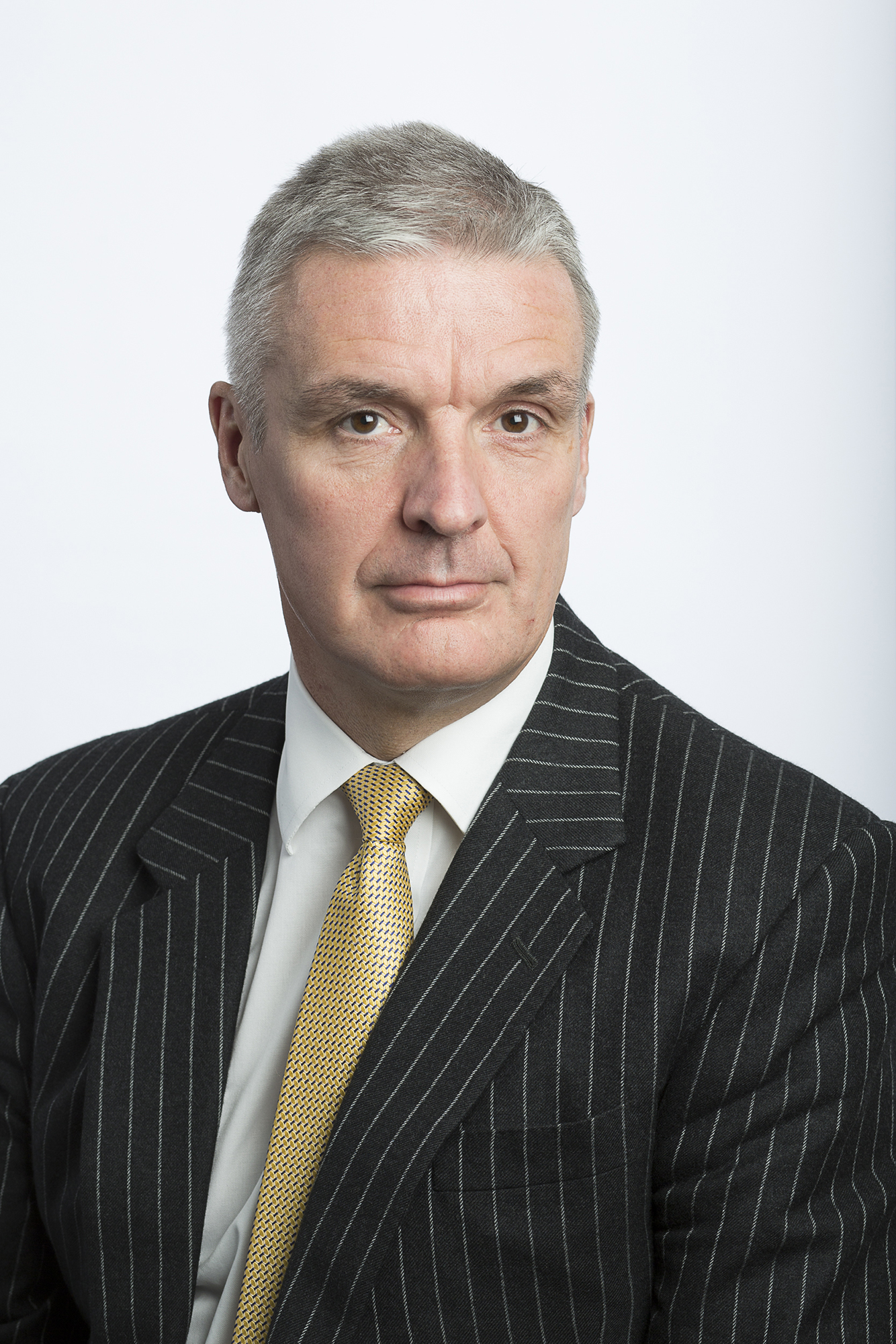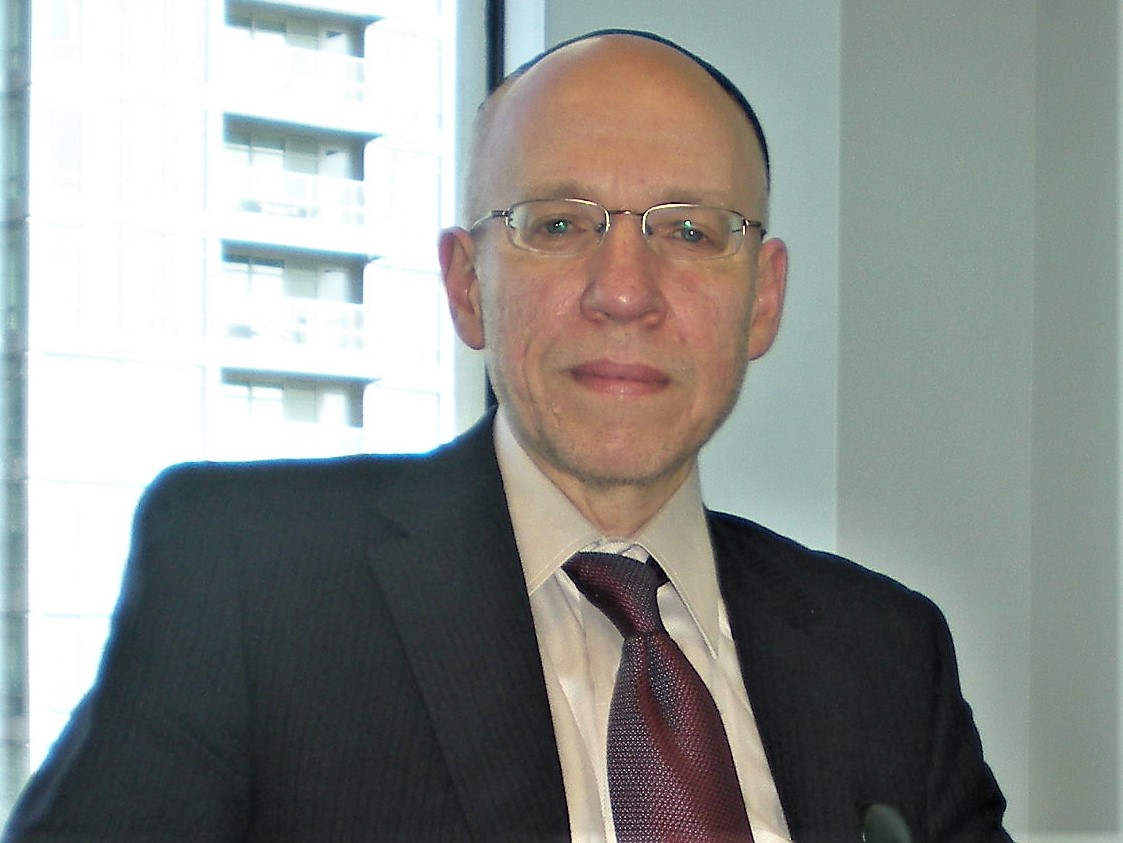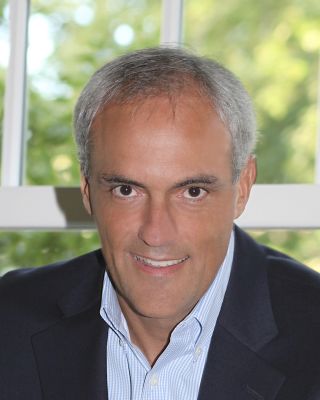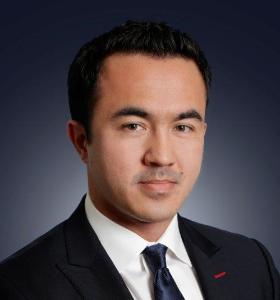
Tony Cousins, CFA, is Chief Executive and Chief Investment Officer of Pyrford International Ltd., BMO Global Asset Management. Prior to serving as Chief Executive and Chief Investment Officer, Mr. Cousins headed, since 1989, Pyrford’s European and U.K. investment management activities.
He was promoted to Joint Chief Investment Officer in 2009 and then further promoted to his current role in 2011. Previously, Mr. Cousins was an equity portfolio manager at Daiwa International Capital Management in London.
Mr. Cousins graduated from Cambridge University in 1985 with a Bachelor of Arts and obtained his Master of Arts and became a CFA charterholder in 1990.
in his 4,009 word interview, exclusively in the Wall Street Transcript, Mr. Cousins details how to build a high return portfolio in this current market:
“We are saying that a slowdown is coming. A lot of recent growth, particularly in the U.S. economy, has been driven by one-off factors, as in the tax cuts and very, very easy monetary policy.
Just stopping QE — quantitative easing — amounts to a policy tightening, even if Powell has now clearly taken his foot off the brake in terms of ending quantitative tightening and normalizing the yield curve.
The effects of the tax cuts in the U.S. are transitory and dropping off. We can see the economy is clearly slowing. That is something to be concerned about.”
The implications for current investors is clear to Mr. Cousins:
“They should be very cautious and stick to quality. Quality, from my point of view, involves investing in very defensive business models that have moats, such as high barriers to entry and low threats of substitution.
Key characteristics in our portfolio are companies with high dividend yields and high returns on equity paired with particularly strong balance sheets. ”
Mr. Cousins has words of caution for those looking to invest in the Italian equity market:
“The worst of all is the Italian banking system that has 14% of assets as effectively nonperforming. That is, it is using a fairly generous definition of what constitutes an NPL.
When we actually have had some growth and better economic conditions, there was an opportunity to try and deal with the structural weaknesses of the European banking system. It didn’t happen. That has been a great shame.
If we are now entering a downturn, and certainly the leading indicators for Europe are pointing down and actually reported growth is quite poor, then this sector is really in no condition to face that sort of worsening environment.
The tier-1 capital ratios that are being published are just not accurate. They are a great work of fiction. If these banks truly had enough capital, they would be paying dividends, and many of them are not.
So that’s one area that we are totally avoiding.
The other areas are peripheral Southern Europe — Greece, Portugal, Italy and Spain. The euro has been a disaster for these areas.
Italy has seen no GDP growth in real terms for 15 years, largely because it has not had the ability, as it had in pre-euro times, to depreciate its currency to restore competitiveness. So the euro has been a disaster.
Ten years ago, Italy had lower unemployment than Germany. It now has much, much higher unemployment. Youth unemployment is one in three.
It looks like it is coming down a bit because the young Italians are simply leaving the country to try and find opportunities elsewhere. That is a source of the populism rising in Italy, which is putting Italy on a collision course with the EU.
They will be strengthened in the European elections. Italy simply has had enough because they cannot use monetary policy and have a one-size-fits-all interest rate set by the ECB.
They want to loosen the fiscal austerity that has been applied to them. That puts them on this collision course with Brussels. You have political leadership that is prepared now to have that confrontation.
You should look for some quite stormy times through the rest of 2019 in that relationship that will be seen in the widening of Italian bond yield spreads versus the core of Germany. That will put immense pressure on the banking sector in Italy and the Italian market in general.
We all know what happened to Greece. Greece was brought into line because it was very small and could be bullied. Italy is a much, much larger economy. It has the third-largest bond market in the world, and it won’t be bullied into submission as Greece was several years ago.
So that is one area in particular to avoid. It is going to be a source of a lot of volatility in European equity markets.”
Read the complete 4,009 word interview to get the complete portfolio picture from Tony Cousins, and where he is putting his money now, exclusively in the Wall Street Transcript.

Sam Wiseman, M.A., CFA, is the Chief Investment Officer of Wise Capital Management Inc. He has 40 years of comprehensive industry experience. He has been a portfolio manager since 1990, having previously been a Vice President, Equities at Bolton Tremblay and a Portfolio Manager at OMERS. Mr. Wiseman is also a member of the CFA Practice Analysis Working Body Committee.
In his 2,492 word interview, exclusively in the Wall Street Transcript, Mr. Wiseman reveals a detailed small cap portfolio development protocol developed at his firm:
“…What we find worldwide, as markets have become more mature and there’s been more regulation, is that small cap has been the highest-performing asset class.
It has shown historical outperformance of 2% to 3% over general equities, and it will continue to do so over five-year periods because the inefficiency is in fact getting greater, not less, as are most other inefficiencies.”
Within the small cap universe, some global winners are apparent:
“…We have a very large weighting for the United Kingdom, which is structurally doing very well, and it uses technology in some cases, like the financial sector, even more than the United States and Canada, much more.”
Then the portfolio finds some great valuations in the midst of market volatility:
“…It’ll show us, for example, a sector that will be out of favor, let’s say, health care or consumer stocks, which are very much out of favor as a theme, but then we’ll purposely go to those stocks and closely examine to find names that were thrown out, that is a baby-thrown-out-with-the-bathwater type of thing.
So that people are rotating out of the sector, but there are still some stocks that are gems there, which might get misclassified. And we’ll find some excellent underpriced stocks.”
Get the complete portfolio from the exclusive 2,492 word interview with Sam Wiseman, exclusively in the Wall Street Transcript.

Scott Wallace, CFA, is Founder and Chief Investment Officer of Shorepath Capital Management LLC. Mr. Wallace joined AllianceBernstein as a U.S. Large Cap Growth Portfolio Manager in 2001 and became U.S. Large Cap Growth Team Leader on March 31, 2010.
Mr. Wallace also was a partner and member of the senior leadership team at AllianceBernstein charged with managing and setting strategy for the firm. Prior to joining AllianceBernstein, he was with JPMorgan for 15 years, where he was a managing director and held a variety of roles in the U.S. and abroad, most recently as head of equities in Japan.
Mr. Wallace has a B.A., magna cum laude, from Princeton University.
In this exclusive 3,391 word interview with the Wall Street Transcript, Mr. Wallace details his current outlook for investors and his unique approach to creating above market returns:
“So Shorepath is a couple of things, all in the pursuit of one goal. And that goal is compounding our clients’ money at superior rates of return over long periods of time in a tax-effective manner.
The goal of this whole exercise is to leave people better off after having entrusted their money to us. And what we’re less concerned about is short-term performance, although you can’t ignore it totally. But long-term performance and long-term generation of capital appreciation is our goal.
And as a result of having that as our singular focus, we implement it in a certain way.
First, we believe that people like to have a relatively concentrated portfolio. So we don’t own that many names, typically around 20…”
One example of this unique approach is a relatively new portfolio position:
“…One of the ones that’s interesting and we’ve added some recently to is Schlumberger (NYSE:SLB). And this is one of the things that’s interesting in this whole move.
Schlumberger is really one of the best-managed oil service companies out there. But today, the stock has gotten so cheap that its dividend yield exceeds by a good margin its corporate bond yield.”
Get the full detail on this and many of Mr. Wallace’s other interesting investments in the complete 3,391 word interview, only in the Wall Street Transcript.

Jonathan S. Raclin, a Principal of Barrington Asset Management, Inc., has been Managing Director of the Enterprise Portfolio. Mr. Raclin graduated with a B.A. from St. Lawrence University and an M.A. from Northwestern University.
Following service as a Commissioned Officer, United States Marine Corps, Mr. Raclin was associated with White, Weld & Co. as a Partner of William Blair & Company, L.L.C., and as Executive Vice President for Capital Markets with The Chicago Corporation. He is a former Regional Chairman of The National Association of Securities Dealers, a former President of the Bond Club of Chicago and of the Attic Club.
He previously served as a director of the St. Simon’s Land Trust, and has been President of the Coastal Georgia Historical Society and Co-Chairman of Emmi Solutions, LLC, a privately held health care information company.
In this exclusive 1,976 word interview in the Wall Street Transcript, Mr. Raclin gives some important advice to investors in the current market.
“We emphasize closed-ended mutual funds for three reasons. The first is diversification; I have little confidence in anybody’s ability to consistently and correctly identify excellent investments.
I like the idea of mutual funds because of the obvious diversification from at least 100 positions in the portfolio…
The second reason I use closed-ended funds is I have little confidence in anybody’s ability to consistently and correctly evaluate valuation levels…”
The economic foresight of Mr. Raclin is honed by decades of experience:
“I believe that the two largest long-term risks to the stock market are, first, the amount of federal debt, $22 trillion with an average life of five years, which means an enormous amount of rollover every year growing at $1 trillion a year based on the projected deficit.
And the second is the entire area of cybersecurity. This incredibly complex technology is critical to almost everybody. When the lights go off, when the computers go dark, need I say more?”
Current IPOs are not investable for Mr. Raclin:
“Items for concern are valuations for some of these overly hyped IPOs. For example, the recent public offering of the company Lyft (NASDAQ:LYFT), from $45 to $88, now trading at $54.
Or Uber (NYSE:UBER), which reported $3 billion in revenues for the quarter and lost $1 billion. My clients would have a heart attack if I owned those kinds of things.”
Get the full detail by reading the entire exclusive 1,976 word interview, only in the Wall Street Transcript.

David Stonehouse, MBA, CFA, is Senior Vice President and Head of North American and Specialty Investments at AGF Investments Inc. Mr. Stonehouse has over 20 years of experience managing both fixed income and balanced portfolios. His rigorous and disciplined investment process is a combination of a top-down approach to duration and asset allocation with a bottom-up approach to security selection.
Mr. Stonehouse is a member of the AGF Fixed Income Team, which has expertise in all the major fixed income categories, including high yield, investment-grade, sovereign bonds and global convertibles, in both emerging and developed markets, as well as global currencies.
Mr. Stonehouse was previously Director, Fixed Income and Portfolio Manager with Acuity Investment Management Inc. AGF Management Ltd. acquired Acuity Funds Ltd. and Acuity Investment Management Inc. in February 2011.
In his exclusive 3,256 word interview with the Wall Street Transcript, Mr. Stonehouse reveals his top convertible bond picks for defensive minded portfolios in this specialty asset class:
“There are close to 1,000 issuers and close to 2,000 issues based on screens of minimum $50 million issue sizes. So there’s a reasonable number of convertibles to choose from.
But it’s just been a vehicle that hasn’t been employed as heavily by companies looking to raise capital and perhaps hasn’t been embraced as much by investors. There are some real advantages to converts for both issuers and investors.”
Mr. Stonehouse reveals his top convertible bond picks for defensive minded portfolios and those to avoid:
“Recent additions to the convertible portfolio include Danaher (NYSE:DHR) and Avantor (NYSE:AVTR), which just IPO-ed last week.
In terms of reductions in areas that we weren’t as fond of, on the health care side, we did reduce our exposure to some of the managed-care areas, although we still hold the likes of UnitedHealth (NYSE:UNH) and Anthem (NYSE:ANTM).
We also reduced exposure to some of the biotech areas that we had been involved in, such as Sarepta (NASDAQ:SRPT). Elsewhere, we took some money off the table on the gold side…”
Read the rest of the exclusive Wall Street Transcript 3,256 word interview to get the complete list of all the convertible bond opportunities in the market today.

Tore Svanberg joined Stifel, Nicolaus & Co., Inc. in 2010 and is a San Francisco-based Managing Director in the technology sector, covering semiconductors specializing in analog, mixed-signal semiconductors.
His past awards include The Wall Street Journal’s “Best on The Street” survey award. Mr. Svanberg has been an analyst for more than 15 years, having also been an analyst with Thomas Weisel Partners, Piper Jaffray & Co. and Robertson Stephens.
In his 3,245 word exclusive interview with the Wall Street Transcript, Mr. Svanberg uses his experience to guide investors to specific stock winners in the current semiconductor sector cycle.
“Automotive is one area that has been pretty interesting over the last few years. In fact, just because of the new electronic content that goes into cars, that is a multiyear process.
Obviously, this is something that used to be more confined to high-end cars, but now you’re seeing some pretty big electronic content happening across the board basically for all cars, whether high end or low end. But I think that’s a trend that’s been in place for a while.
I think the second one, which is maybe less prevalent or less obvious to people, is what’s happening in industrial. And here of course, we have things like factory automation, IoT, or internet of things, becoming an integral part of a lot of companies’ business models.
And the reason I’m saying it is, it’s less obvious to people because obviously we don’t see on a daily basis exactly what that means, but it’s definitely happening.
And then, the last big trend or end market, I would say, which has been more of a late 2018 phenomenon, is 5G. So obviously, we’re now at the beginning of a fairly pronounced and long upgrade cycle when it comes to wireless communications and specifically 5G.”
“…If you look at the automotive side, like I mentioned earlier, large-cap players are really the ones that have the most exposure.
So here you have companies like NXP, Texas Instruments (NASDAQ:TXN), Maxim (NASDAQ:MXIM) and Analog Devices (NASDAQ:ADI). So those are the four companies that I cover that have relatively higher exposure there.
I would point out that Maxim’s done a really good job on the EV side of the automotive discussion. And then, I would say companies like Analog Devicesare probably very well-positioned to take advantage of what we call the connected car or the communications part of automotive.”
Get all of Tore Svanberg’s top picks by reading the entire 3,245 word interview, exclusively in the Wall Street Transcript.

Charles Anderson serves as Vice President, Senior Research Analyst within the Equity Capital Markets division at Dougherty & Company LLC.
He covers the mobile computing industry with a focus on supply chain, components and software applications. He has been with Dougherty & Company since 2007 and his research experience includes location-based services and intelligence, reconnaissance and surveillance — ISR — companies.
In this 4,069 word interview, exclusively to the Wall Street Transcript, Mr. Anderson details the current state of the semiconductor sector and details the reasoning behind his top picks.
Increasing content for the automotive sector seems to be driving alot of the mergers in the space:
“The other one that we’re seeing acquired in our universe is Aquantia (NYSE:AQ). They are going to be acquired by Marvell (NASDAQ:MRVL).
What Aquantia is really a specialist in is, whereas Quantenna (NASDAQ:QTNA) is high-performance Wi-Fi, think of Aquantia as high-performance Ethernet. There are roughly a billion Ethernet ports sold a year, but a small percentage of them are what I would classify as high performance, meaning multi-gig. Most are at 1-gig speeds. Aquantia has perfected what’s called the Ethernet PHY; that is multi-gig.
They’re really one of the leaders in the industry. They’ve had quite a bit of success historically in the data center, but now they’re branching it out to other new markets such as enterprise infrastructure, access points, PCs and now automotive.
So they actually have a handful of design wins in the car. You can think of the future vehicle as being packed with sensors, and those sensors are going to need to take that data at very high speed and low latency back to a central processor to make decisions for an autonomous system, for a semi-autonomous system, for ADAS, and what you’re going to need is a very high-speed pipe going from that sensor to the main chip, and that’s where Aquantia comes in.”
Charles Anderson has identified the next highly coveted semiconductor acquistion target. Find out what this stock is by reading the entire 4,069 word interview, exclusively to the Wall Street Transcript.

Mitch Steves is an Analyst at RBC Capital Markets primarily focused on networking equipment and semiconductor companies. In 2016 and 2017, he was noted as a “Rising Star of Wall Street Research” according to Institutional Investor magazine in three categories: Telecom & Networking Equipment, Semiconductors and IT Hardware/EMS.
He started at RBC in 2011 and launched coverage in 2015. Earlier, he held positions at Gleacher and Company covering hardware and networking equipment and worked as an investment banker at Cowen and Company. He holds an economics degree from the University of California Berkeley.
In this 4,885 word interview, exclusive to the Wall Street Transcript, Mr. Steves reveals the future value of the current trends in the semiconductor sector.
“I think one of the biggest trends is deep learning and AI — artificial intelligence. The second one would be IoT — internet of things — and self-driving vehicles.
Those three are the bigger ones. And I’d say structurally too, I think the landscape in semis has changed quite a bit.
If we look back 10 years and I told you that there’s going to be a whole bunch of private semiconductor companies that were going to attack the server and PC markets, I think I would have been laughed out of the room.
But that’s kind of where we are today now because essentially what’s happened is that TSMC (NYSE:TSM) has surpassed Intel (NASDAQ:INTC) from a manufacturing-capability standpoint.”
One of the biggest trends identified by Mr. Steves is Artificial Intelligence or AI:
“On the manufacturing side, you’re definitely going to have it. In the future, robots will essentially be doing a lot of the manual labor that just shouldn’t be done by humans long term.
Anything that’s a rules-based product is going to be done by a computer in the future. That’s the best way I could describe it. If there’s a step-by-step way of doing something, that’s eventually going to go to a robot or AI.”
In addition to picking winners in the AI sub-sector, Mr. Steves also identifies potential acquisition targets:
“TWST: Do you foresee in the next couple of years more merger and acquisition activity in the sector?
Mr. Steves: I do think we’ll see that. I think we’ll see that particularly in the spaces that are not overly high tech. A good example of this probably is the analog space that probably needs to consolidate even more.
You’ve got small-cap companies like Semtech (NASDAQ:SMTC) that are $3 billion in size, but they could easily be purchased by a larger analog player.
I think even Maxim(NASDAQ:MXIM) is probably a little bit bigger, but they could be consolidated as well.
You’ve got several other kinds of smid-cap names there that have good products. One that we don’t cover that is a good example of a solid company is …”
Read the entire 4,885 word interview and get all the best recommendations from this award winning semiconductor stock analyst, only in the Wall Street Transcript.

Hans Mosesmann is a Senior Research Analyst and Managing Director at Rosenblatt Securities Inc. Prior to joining the firm, he was an electrical engineer who spent a decade working at chipmakers Texas Instruments and Advanced Micro Devices before moving to Wall Street in 1996.
Mr. Mosesmann covers such companies as AMD, Intel, Micron Technologies and NVIDIA. Mr. Mosesmann spent a decade at Raymond James Financial covering the semiconductor industry.
Earlier, he worked as an equity analyst for several technology- and growth-company-focused boutiques, including Needham & Co., Volpe Brown Whelan and Soundview Securities, as well as Prudential Securities.
Mr. Mosesmann received a Bachelor of Science degree in electrical engineering from the University of Florida and an MBA in finance from Loyola University of Maryland.
In this 4,127 word interview, exclusively for the Wall Street Transcript, Mr. Mosesmann reveals his current outlook for semiconductor stocks and his top picks.
“My two top picks this year and for the next several years actually would be Advanced Micro Devices (NASDAQ:AMD) and Xilinx (NASDAQ:XLNX).
AMD historically goes through these processor cycles versus Intel (NASDAQ:INTC), where they’re able to gain important market share, as they did in 2006 when they captured 25% of the x86 market from low single digits in the previous three or four years.
And so we are in that cyclical process again, and in today’s case, AMD has a very, very good product line of processors that go into notebooks, desktops and servers.
They have an architecture that is actually better at the moment than what Intel has, and in AMD’s favor, they have a process technology leadership because now they’re using TSMC (NYSE:TSM) as a foundry.
Intel unexpectedly, if you look back several years ago, has had difficulty with process technology. They recently indicated that their three-year expectation is for them to grow their overall sales in the low single digits but incorporates what we believe are important declines in their microprocessor business.
So they are basically admitting or acknowledging that AMD is going to be gaining share. This is a tremendous opportunity, and it could double the size of AMD over the next several years.
AMD is also in a position to gain market share in the graphics market versus NVIDIA (NASDAQ:NVDA). They have kind of a dual thrust in terms of gaining share in markets where they have little or not meaningful market share.
And all these businesses are quite profitable. There are also new generations of game console introductions that will benefit AMD next year from Sony (NYSE:SNE) and Microsoft (NASDAQ:MSFT).
And recently, over the past week or two, the Department of Energy announced the first major exascale supercomputer, called Frontier, that will come online in 2021 and will support 1.5 exaflops of performance, which is six or seven times faster than the number-one supercomputer today.
Frontier will be based on both AMD CPUs and AMD GPUs with the help of Cray (NASDAQ:CRAY) supercomputer.
Read the full 4,127 word interview, exclusively in the Wall Street Transcript.

Hamed Khorsand is an Analyst at BWS Financial Inc., which he founded in 2000. At first, the firm published a weekly newsletter and then managed money for individuals. His research focus led to BWS to purely providing equity research. He graduated from University of Southern California.
In this 2,662 word interview, exclusively for the Wall Street Transcript, Mr. Khorsand develops his expectations for the semiconductor industry.
“I think data centers, what has been lately catching people by surprise is how it has slowed considerably given expectations. And I think a lot of that has to do with just people thinking that there’s never a slowdown in purchasing when it comes to data centers.
In fact, what’s happening is data center operators are now considering transitions to faster connectivity within the data center. And I think that’s bringing on some pause and some consumption of what was already bought, on-hand inventory at the data center. This I think is a more of a recent event that’s been occurring. I think people are still waking up to the possibility of what’s happening on this front.”
One stock that might evade the slowdown is “Semtech (NASDAQ:SMTC). That company has multiple portfolios of products, but one of them is for the automotive industry. That would be one stock that I do cover that is related to the auto industry.”
An area of great demand is the “10-gigabit Ethernet, what is basically changing the Ethernet ports on every computer. And we’re slowly going through that transition now.
Every computer that we’re used to — and if you look back, every desktop or most of the laptops, you have this Ethernet port, and we’re used to it being in 1-gigabit. What they are able to do is provide you a 5-gigabit or 10-gigabit that was capable.
And so you get more bandwidth for your computer.
Along with this new upgrade cycle that we’re seeing in wireless gateways, that’s going to either 11ax or what they’re calling Wi-Fi 6, that is incorporating this new multi-gigabit Ethernet into those gateways.
So now you could use a faster link without changing anything because it’s already done for you. And this industry is already slowly moving that way with different product releases, as far as the notebooks are concerned, desktops are concerned. You see that with some of these wireless gateways are coming out with them. So that’s what I think was a big deal.”
Get the rest of the 2,662 word interview with Hamed Khorsand, exclusively in the Wall Street Transcript.